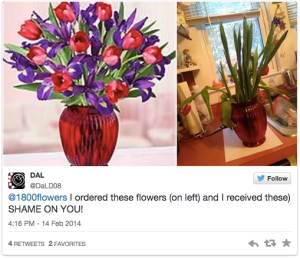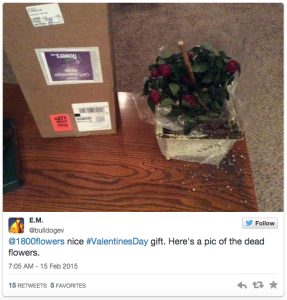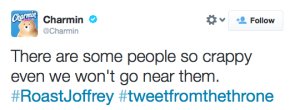Ben Tole, a Central Washington University alumni, has been working with sports media for several years. Tole has worked with a variety of teams including the Washington Stealth Professional Lacrosse team, the Seattle Storm Women’s Basketball team, and currently works as the communications coordinator for the Tri-City Americans Hockey Club.
Tole proves you can successfully combine PR and your personal interests. In this interview, Tole discusses the ups and downs of sports media, career challenges for young professionals, and advice for those of us about to enter the real world.
You’ve worked with several sports teams. What drew you to working with sports media?
I originally went to Central Washington University to go into the education field thinking that I wanted to be a teacher. However, going through CWU’s general education requirements I found that a had a fascination with media which I was first exposed to in the Communications Mass Media class.
After exploring the specific fields in communication I found that PR was the one that most appealed to me. With PR you have the luxury of being able to go into almost any industry you want. Every company in the world needs PR people, so I decided to join PR with my passion in life, sports.
Several of my classmates want to enter this field. What’s the best part of working with sports media?
If you are lucky enough to work in sports media you get to do so many cool things. My favorite is getting to know the players and coaches on a personal level and overall being around the team, in the locker room after the game, and behind the scenes before the game.
Being able to get up in the morning and go to work in the stadium is a really unique feeling. On top of that, you get paid to be at sporting events. For a person who loves sports, what could possibly beat that?
Every job has its downsides. For you, what’s the toughest part of your job?
The sports industry is a very different business much like the merchandise or food industry. Teams make their money capitalizing on consumers during their free times meaning you work a lot of nights and weekends.
During the season there isn’t a whole lot of days off and you will regularly be working hours that you likely won’t be getting paid for. On game days I usually arrive at work at 9 a.m. and won’t leave until after midnight. Also, compensation is not very competitive in sports particularly early in your career. You will make more money by doing something like working for a PR firm, but if you’re like me you want to wake up every morning and be excited to go to work.
Young professionals like me often start in minor league sports where there is very little money. There is money to be made in bigger leagues but it can take time to get there and some people never get there.
What are some challenges you’ve faced in your career path?
My biggest challenge was landing that first full time job. Coming out of college with limited experience is not an easy sell to employers.
Another challenge I have faced is my age, working with people significantly older than me. You may run into a case where people won’t take you seriously or refuse to listen and take orders from someone as young as you. If you work hard and prove your value and capabilities it is a problem that you can easily overcome.
Do you have any major career goals for the future?
It’s my goal to one day to be in charge of an entire communications department. Whether that is in sports or not remains to be seen. I like what I have on my resume right now. I think I’m off to a good start early in my career and can’t wait to get even more experience.
Another thing I would like to do one day sooner rather than later is get my master’s degree, I’m leaning towards Master of Business Administration but haven’t made my final decision.
What advice would you give to students entering the PR field?
My advice to you and anybody looking to get into PR is to get experience however you can. You will find as you graduate and begin looking for that first “real world” job that the market for a college graduate with zero work experience is slim to none.
How can you get this experience? Internships are huge; I know that you are required to take a one-quarter internship as part of your graduation requirement. My challenge to you is to not stop at that one quarter. Every person graduating with a PR degree will have that one-quarter of experience, which for many people won’t help because companies have no interest in you if your experience is fetching coffee and photocopying.
Stay with the internship as long as possible and get as much experience doing legitimate PR work as you can. If you can do multiple internships, that’s even better in my opinion. I did three internships before getting this job. It is often a long road so get ahead while you can.
You’ve probably heard your professors talking about networking and they couldn’t be more right. Internships are probably the best way to get these connections. Other ways to do it are buy getting informational meetings with anyone who will let you come in. They might not be hiring but they might know someone who is looking for someone. I was never part of PRSA while a student but it’s something I wish I had done.
 When I first began my advertising minor, our professor showed us an example of viral content; the Kit Kat Jesus. This story broke in Europe through a Dutch news site due to a fake email from a European agency. The image was shared on over 150,000 websites, including several news sites, for a grand total of zero dollars.
When I first began my advertising minor, our professor showed us an example of viral content; the Kit Kat Jesus. This story broke in Europe through a Dutch news site due to a fake email from a European agency. The image was shared on over 150,000 websites, including several news sites, for a grand total of zero dollars. Another big story from 2014 was the theft of an Australian tourist attraction, a 10-ton mango statue. The theft made headlines around the world. There were photos, footage, media releases–but no police report was made.
Another big story from 2014 was the theft of an Australian tourist attraction, a 10-ton mango statue. The theft made headlines around the world. There were photos, footage, media releases–but no police report was made.




 As Valentine’s Day 2015 comes to a close, it’s become an annual tradition to see 1-800-Flowers.com deal with customer service fallout. 1-800-Flowers.com had a terrible year on
As Valentine’s Day 2015 comes to a close, it’s become an annual tradition to see 1-800-Flowers.com deal with customer service fallout. 1-800-Flowers.com had a terrible year on 






